Name: Katherine Gravett
Which came first in your life, the science or the art?
It’s hard to separate which came first because each influences and inspires the other. As a child, I would draw from my imagination, from nature, and from stories I loved. All of those interests were fueled by a fierce curiosity about the world, human nature, and how it all works together.
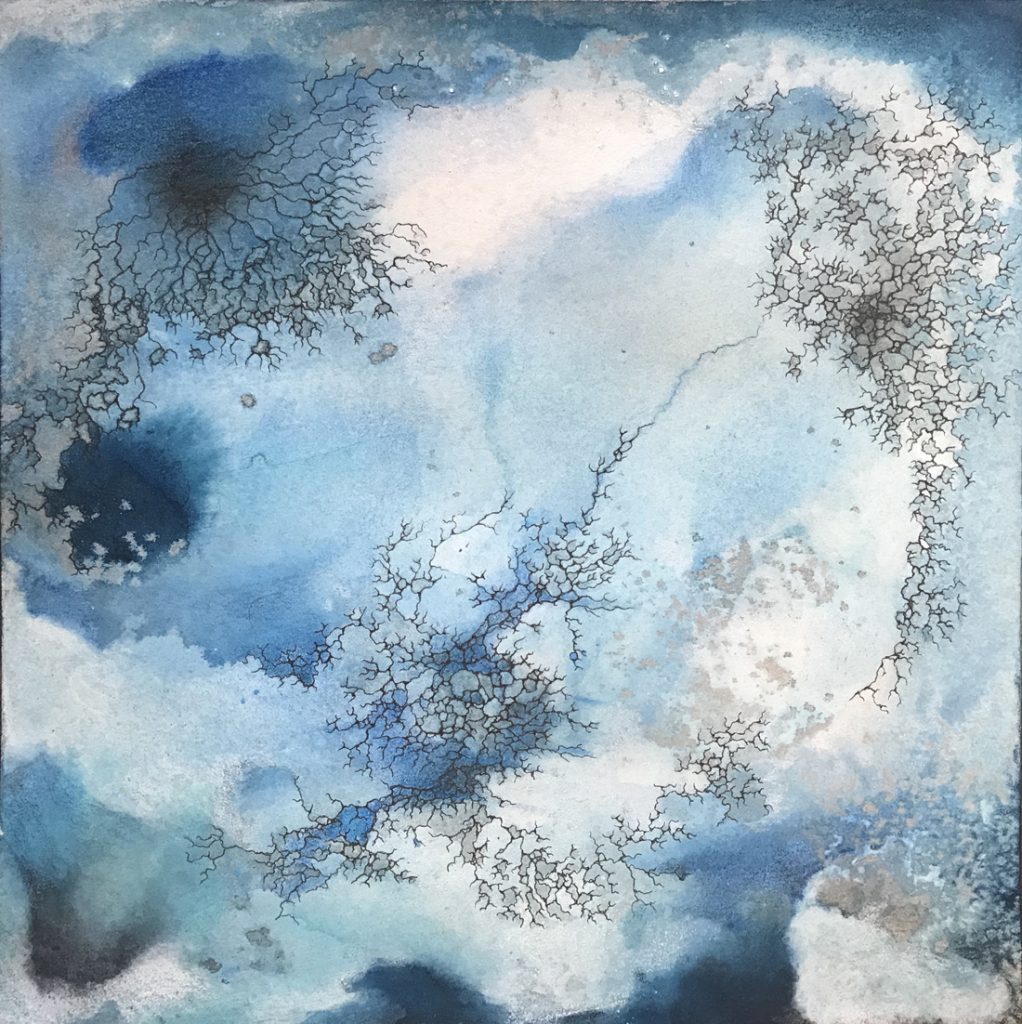

Which sciences relate to your art practice?
Time and again, I return to theories around complexity, emergence, and the interplay of order and chaos. This is my key area of interest and intersects all others.
Neuroscience and earth sciences—due to personal background and previous interest—heavily influence my process and imagery. I utilize chemical reactions and physics, and, as a result, the abstract work often features cellular, fractal, organic, and botanical elements.
What materials do you use to create your artworks?
Though I work primarily in drawing and other 2D media, I use a combination of traditional materials and techniques (ink, pencils, and pens) and completely unconventional ones. I’m just as likely to combine carbonated water, brandy, a projectile motion, and an oven to begin a piece of work as I am to use acrylic ink, water, and a brush. I learn a great deal about the interactions between heat, ink, and oil in an art/chemistry experiment as I do about growth and fractal formation from observing nature and drawing. It’s the combination and experimentation with art and science that facilitates the end result.
“I’m just as likely to combine carbonated water, brandy, a projectile motion, and an oven to begin a piece of work as I am to use acrylic ink, water, and a brush.”
Katherine Gravett
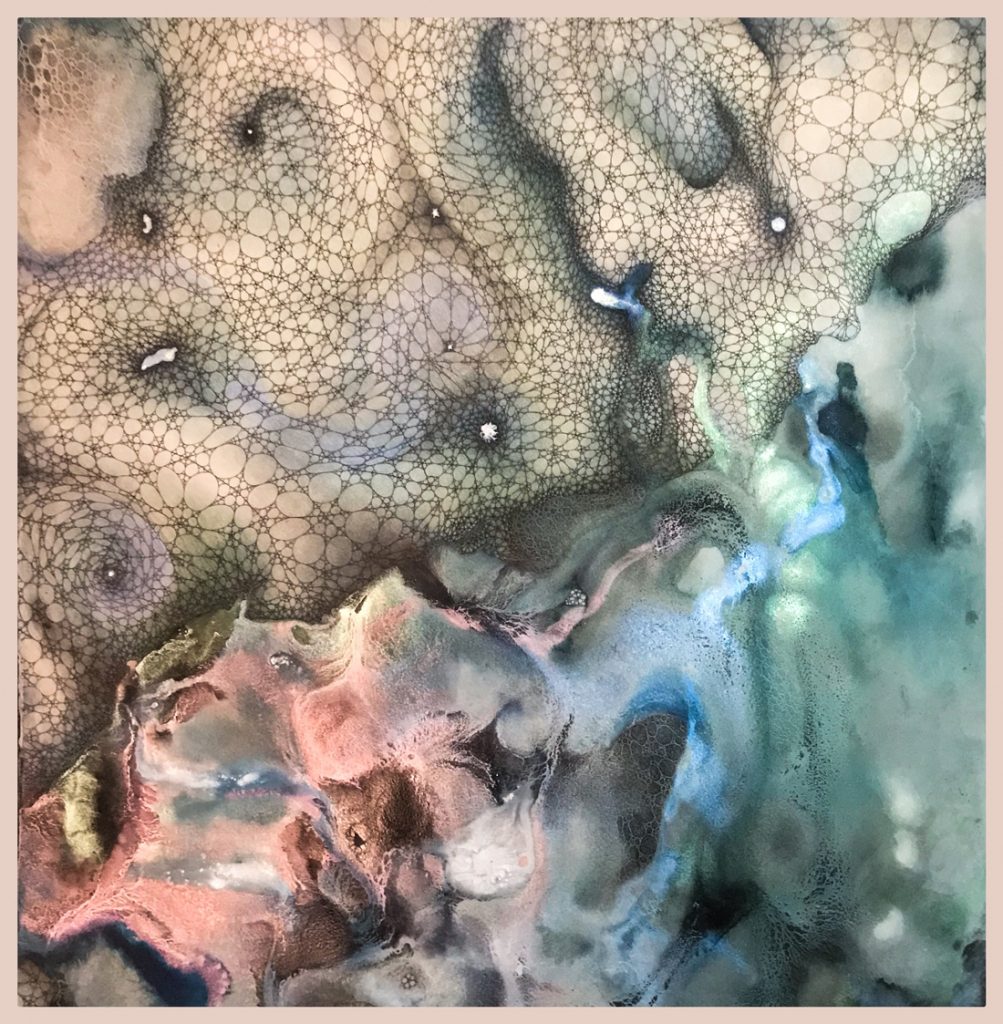
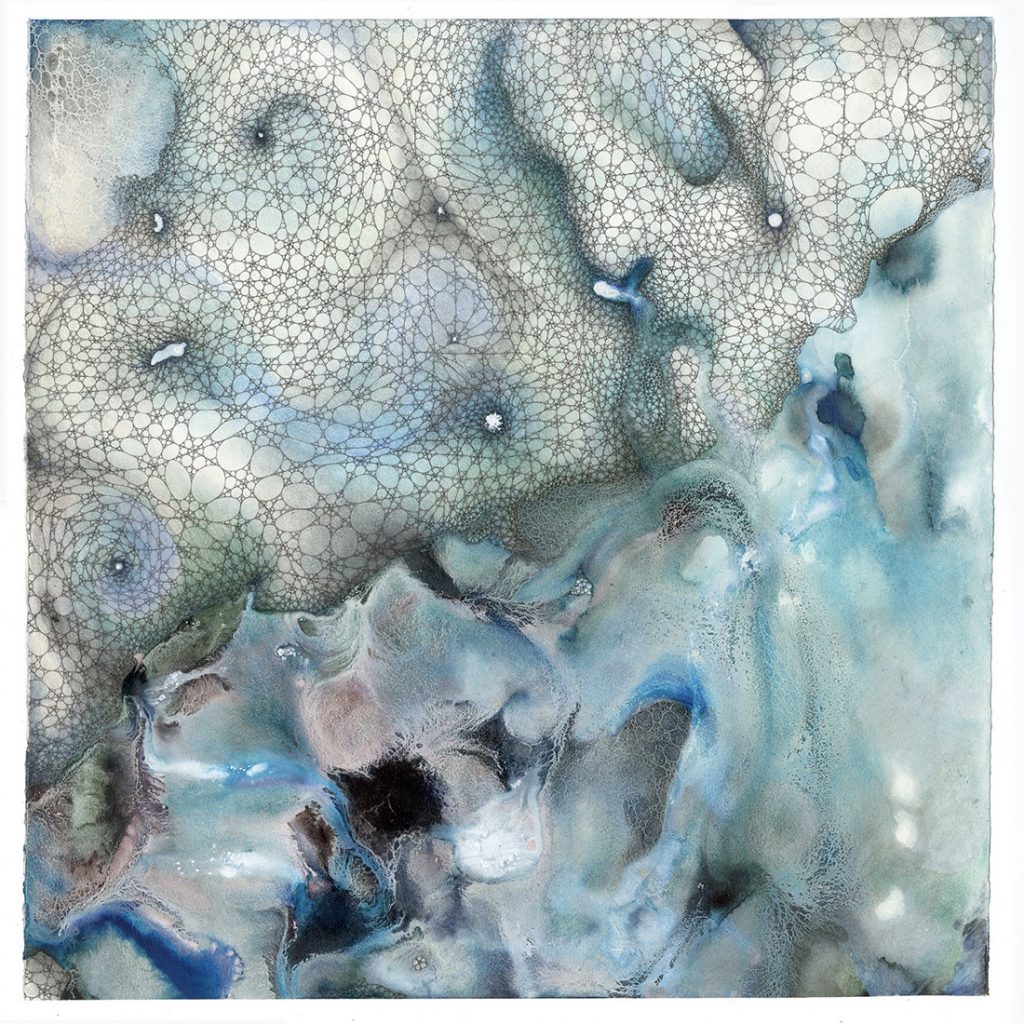
Artwork/Exhibition you are most proud of:
A few projects stand out for me, which involved collaborations with scientists, artists, and the University of Cambridge, but my favourite work came from a collaboration with Professor David Rowitch and his team at the Wellcome – MRC Cambridge Stem Cell Institute.
Brain injury is a subject near and dear to me, and through the Stem Cell Exchanges project, I was able to visit the biomedical campus, tour the laboratory, and learn from the scientists and researchers there about neonatal brain injury treatment. There was a surprising amount of common ground between our processes regarding research, experimentation, and trial and error, and we found lots to talk about. The work I produced was a mirroring of the process we’d discussed together, in which development begins, damage occurs ,and repair commences with gene therapy. Inspired by their process, imagery, and other elements discussed, I began a controlled drawing, damaged it by spilling ink and slicing it into three pieces, then reconstructed those pieces into a new work using colours inspired by the dyes use in the lab and neuron-like patterns created by the ink drops and pen marks.
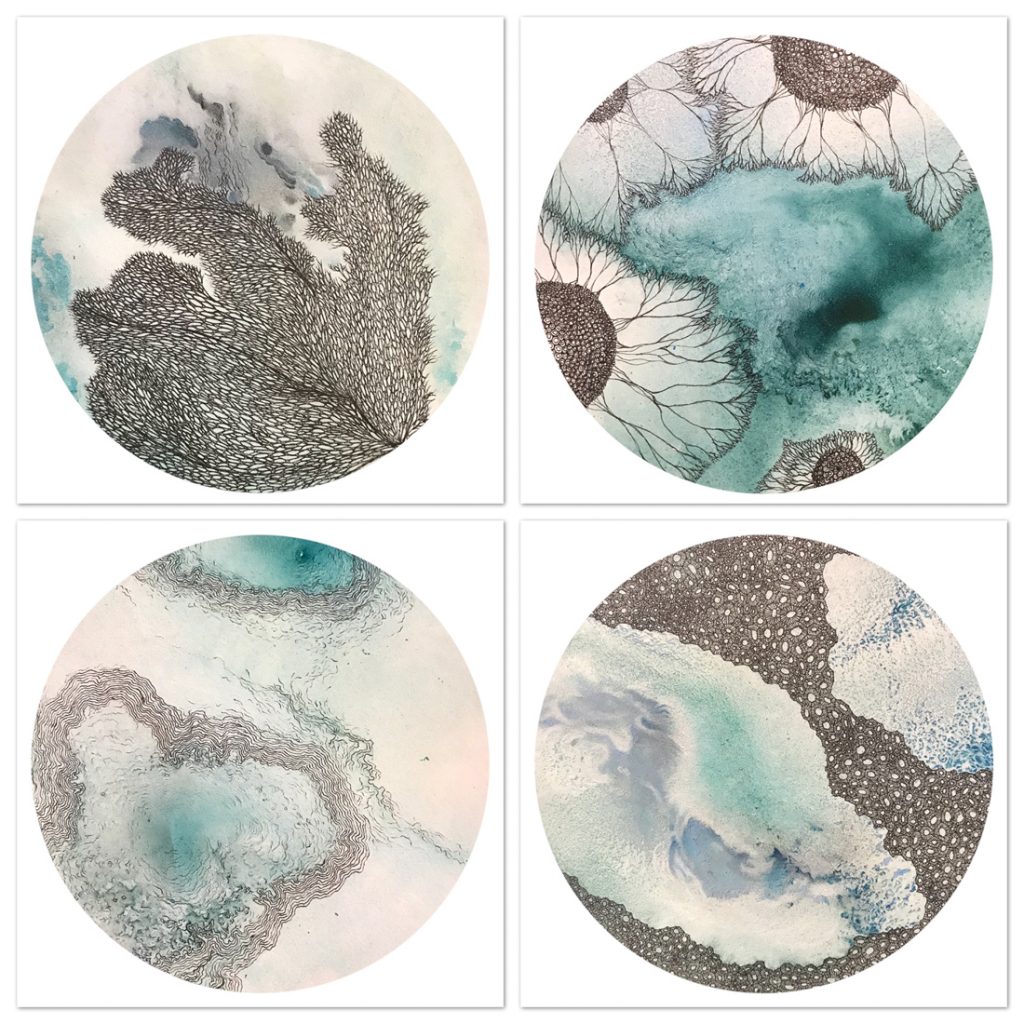
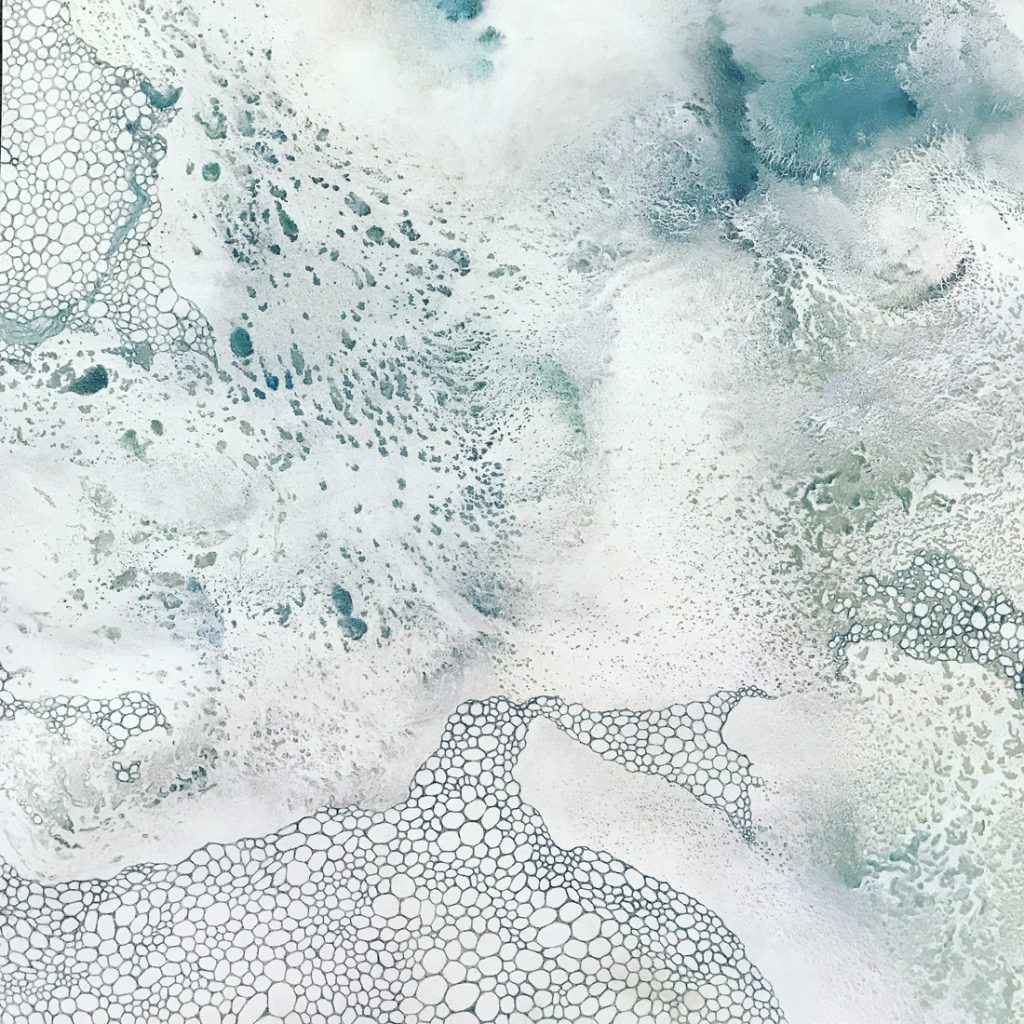
Which scientists and/or artists inspire and/or have influenced you?
So far? Every scientist and doctor I’ve been lucky enough to work with on a project over the last few years has inspired me in some way—either through their approach to research or their experiments in the laboratory. When working with Jerome Neufeld, he was kind enough to show me some of his experiments in fluid dynamics and it inspired a whole new set of experiments in my studio.
I’m also inspired by Leonardo da Vinci, for his multidisciplinary approach to invention through art and science; Edward Norton Lorenz, for chaos theory and the butterfly effect, the incredible work of Stephen Hawking. I could go on forever; I’m always coming across areas of science that inspire me in some way.
The artists that truly inspire me are Keith Tyson, a contemporary artist exploring generative systems, and Cornelia Parker, for her haunting and beautiful installations. Andrew Carnie and Susan Aldworth are also great inspirations to me. They bring art and science together in unique, intriguing, and captivating ways.


Is there anything else you want to tell us?
I would describe my art as a visual representation of my mind at work. I’m constantly trying to make sense of the world and my own small part in it. I find that my caring role at home and subsequent research into trauma and neurorehabilitation has made me very aware of how interconnected everything is—how one event can have a ripple effect that cannot be anticipated. I’m wrestling between random happenstance and control throughout a drawing with an unforeseen end result. I won’t know where the next pen mark, ink drop, or chemical inclusion will take the composition, so the image will emerge over time.
“I would describe my art as a visual representation of my mind at work. I’m constantly trying to make sense of the world and my own small part in it.”
Katherine Gravett
I look to science, art, music, and literature as a means to examine human experience, the nature of opposites, and the spectrum in between. The artwork you see is an expression of this process.
Find out more at Katherine Gravett’s website.
Share this Post
